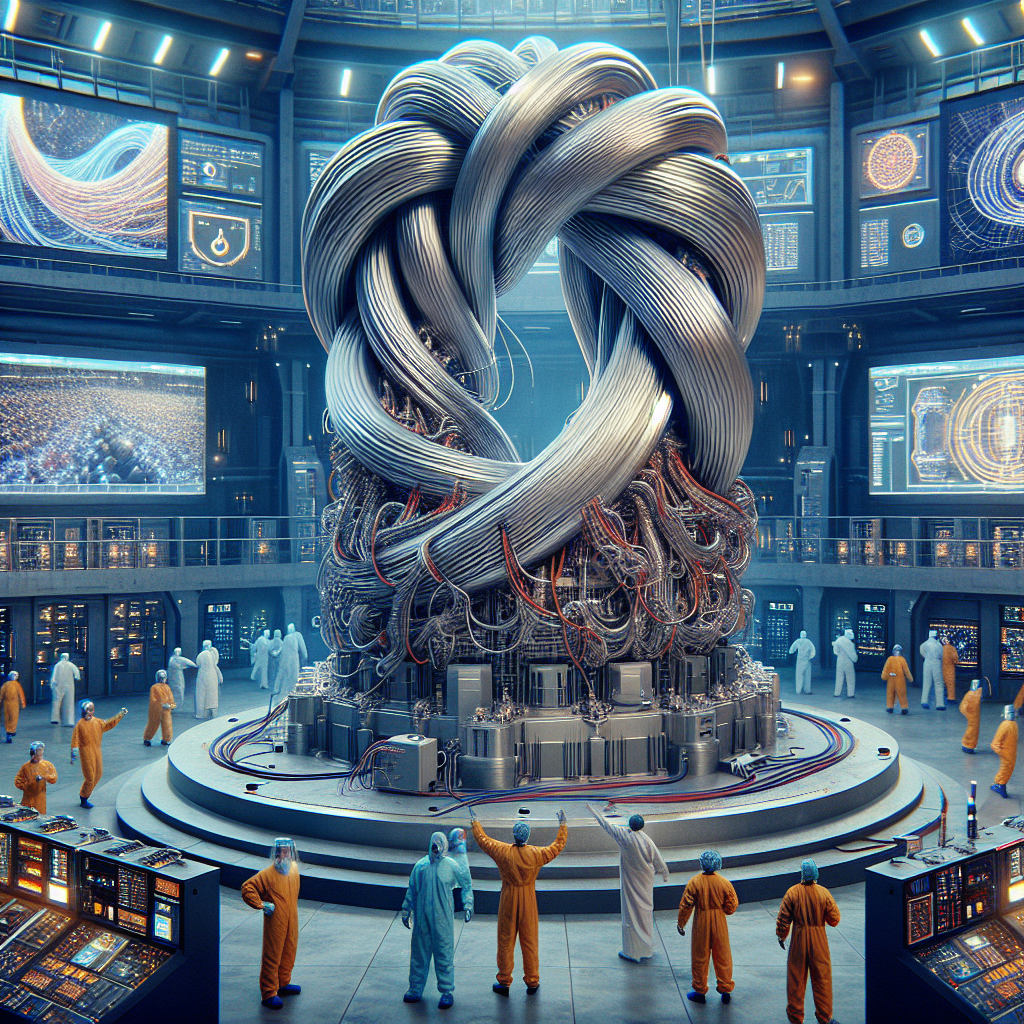The Future of Energy: ITER's Breakthrough with the World's Most Powerful Magnet
Introduction
The quest for sustainable and clean energy has been a driving force for technological advancements across the globe. Among these, nuclear fusion energy — a process mimicking the sun’s ability to generate vast amounts of energy — has garnered immense interest for its potential to revolutionize the energy sector. Recently, the ITER (International Thermonuclear Experimental Reactor) project, an ambitious global collaboration, achieved a monumental milestone with the successful completion and testing of the world's most powerful magnet, known as the central solenoid. This achievement paves the way for humanity to move closer to realizing clean, limitless energy through nuclear fusion.
In this blog, we’ll explore the significance of this breakthrough, how the central solenoid works, and its implications for the future of sustainable energy production.
ITER’s Central Solenoid: Engineering Marvel of the Decade
What is the ITER Project?
The ITER project is an international collaboration involving 35 nations, including the United States, China, the European Union, India, Japan, South Korea, and Russia. Its goal is to demonstrate the scientific and technological feasibility of nuclear fusion as a large-scale energy source. Located in southern France, ITER is often referred to as one of humanity's most ambitious energy experiments.
The Central Solenoid: The Heart of ITER
At the core of ITER’s tokamak (a donut-shaped fusion reactor) lies the central solenoid, an incredibly powerful magnet responsible for confining and stabilizing plasma — the hot, charged gas essential for nuclear fusion reactions. Standing at 60 feet tall and weighing over 1,000 tons, the central solenoid is a technological marvel.
- Power & Strength: With a magnetic field strength of 13 Tesla, it’s strong enough to lift an entire aircraft carrier, showcasing unparalleled engineering precision.
- Complex Engineering: Constructed using state-of-the-art superconducting materials, the magnet can operate at temperatures as low as -269°C, enabling superconductivity and minimal electrical resistance.
This central solenoid is critical for ITER’s ability to sustain the intense conditions necessary for nuclear fusion, including temperatures exceeding 150 million degrees Celsius — ten times hotter than the core of the sun.
Why Is This Achievement So Game-Changing?
1. Advancing Nuclear Fusion Technology
Fusion is considered the “holy grail” of energy because it creates no greenhouse gas emissions, produces minimal radioactive waste, and uses abundant resources like hydrogen isotopes. The successful completion of the central solenoid demonstrates that complex engineering challenges in nuclear fusion can be overcome.
2. Global Collaboration in Action
The ITER project is a shining example of international cooperation on a truly global scale. Nations often at odds politically have come together to share resources and expertise in the pursuit of clean energy solutions.
3. Potential Impact on Energy Markets
If successful, nuclear fusion could disrupt traditional energy markets reliant on fossil fuels. It would provide a virtually limitless and sustainable source of energy, reducing dependence on coal, oil, and natural gas and helping combat climate change.
Challenges Remaining on the Road to Fusion
Despite this remarkable achievement, substantial hurdles remain before nuclear fusion can transition from experimental science to practical application:
- Cost Concerns: Developing and maintaining fusion reactors involves billions of dollars, raising questions about their financial feasibility.
- Technical Barriers: Achieving a sustained fusion reaction remains a complex challenge. The reaction must generate more energy than it consumes — a milestone yet to be achieved.
- Public and Political Support: Large-scale projects like ITER require unwavering support from governments and international organizations, which can waver with political volatility.
What This Means for the Future
The completion of the world’s most powerful magnet by ITER is more than just a scientific achievement. It represents hope for a future where humanity can harness the power of the stars to meet ever-growing energy demands. As we see increasing effects of climate change and dwindling fossil fuel reserves, breakthroughs like this remind us that innovation and global collaboration can lead to solutions that once seemed impossible.
Related article: The Physics Behind Nuclear Fusion and How It Powers the Sun
Q&A Section
Q1: How does nuclear fusion differ from nuclear fission?
A: Nuclear fusion involves combining atomic nuclei, whereas nuclear fission involves splitting them. Fusion produces significantly more energy and less radioactive waste than fission, making it a cleaner energy source.
Q2: When will nuclear fusion be available for commercial use?
A: Experts estimate it may take another 20 to 30 years before nuclear fusion is economically and practically viable for widespread commercial use.
Q3: What are the main benefits of nuclear fusion?
A: Fusion is environmentally friendly, produces no greenhouse gas emissions, generates minimal radioactive waste, and uses abundant fuel sources, such as hydrogen isotopes.
Q4: How can ITER sustain such high temperatures?
A: ITER uses magnetic confinement to stabilize super-heated plasma and prevent it from coming into contact with the reactor walls, allowing it to safely reach extremely high temperatures.
Q5: How does the central solenoid contribute to the fusion process?
A: The central solenoid generates powerful magnetic fields to confine and control the plasma needed for the fusion reaction, ensuring it remains stable and hot enough for atoms to fuse.
Conclusion
The successful testing of the central solenoid isn’t just a win for science; it’s a step forward in humanity’s journey toward sustainable energy independence. The ITER project highlights what can be accomplished when nations pool their resources and expertise, united by a shared vision for the future. For those passionate about clean energy and technological progress, this achievement serves as both inspiration and a call to action to support and invest in such transformative projects.
Stay tuned for more updates on ITER and the journey toward fusion energy — a journey that could redefine how the world powers itself for generations to come.
Related article: Why Clean Energy Cannot Wait: Breaking Down Key Renewable Solutions
According to a report by Reuters, ITER's central solenoid completion brings us closer to achieving sustainable and clean energy solutions.
Tags
#NuclearFusion #CleanEnergy #ITERProject #Sustainability #FutureEnergy #ScientificBreakthrough #EnergyInnovation
